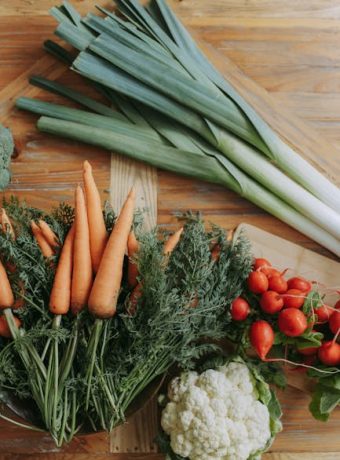Exploring Healthy Food in Mexican Cuisine
Mexican cuisine is often associated with indulgent dishes like burritos, tacos, and enchiladas, which can be high in calories and fats. However, this vibrant cuisine also offers a wealth of healthy food options that are both nutritious and delicious. In this blog post, we will delve into the healthy side of Mexican cuisine, exploring nutrient-rich ingredients and wholesome dishes that you can enjoy guilt-free.
The Nutritional Powerhouses in Mexican Cuisine
Mexican cuisine features a variety of ingredients that are packed with essential nutrients. Let’s take a look at some of the standout elements that make this cuisine a healthy choice:
Beans: Protein and Fiber Rich
Beans are a staple in Mexican dishes and are an excellent source of plant-based protein and fiber. Black beans, pinto beans, and kidney beans are commonly used in recipes such as frijoles (refried beans) and bean salads. According to the USDA, one cup of cooked black beans provides about 15 grams of protein and 15 grams of fiber, making them a nutritious addition to any diet.
Avocado: The Good Fat
Avocados are another key ingredient in Mexican cuisine, often used in guacamole and salads. They are rich in monounsaturated fats, which are known to support heart health. A study published in the Journal of the American Heart Association found that replacing saturated fats with avocados can reduce bad cholesterol levels and improve overall cardiovascular health.
Tomatoes: Antioxidant Power
Tomatoes are used extensively in Mexican salsas, sauces, and salads. They are a great source of vitamins C and K, potassium, and antioxidants like lycopene. Lycopene has been shown to reduce the risk of chronic diseases such as heart disease and cancer, making tomatoes a valuable addition to a healthy diet.
Healthy Mexican Dishes to Try
Now that we’ve highlighted some of the nutritious ingredients in Mexican cuisine, let’s explore some healthy dishes that you can easily incorporate into your meal plan:
Grilled Fish Tacos
Fish tacos are a lighter alternative to traditional beef or pork tacos. Use grilled fish like tilapia or snapper, and top with fresh salsa, cabbage, and a squeeze of lime. Fish is a great source of lean protein and omega-3 fatty acids, which are beneficial for heart health.
Chicken Pozole
Pozole is a traditional Mexican soup made with hominy, a type of maize. Opt for a chicken-based pozole, which is lower in fat compared to pork. This hearty soup is rich in vitamins and minerals from ingredients like hominy, tomatoes, and chili peppers.
Vegetarian Fajitas
Fajitas are typically made with grilled meat, but a vegetarian version can be just as satisfying. Use a medley of colorful bell peppers, onions, and zucchini, and serve with whole grain tortillas. This dish is high in fiber and vitamins while being low in calories.
Tips for Making Mexican Food Healthier
Here are some actionable tips to make your Mexican meals even healthier:
Choose Whole Grains
Opt for whole grain tortillas, rice, and corn instead of refined versions. Whole grains are higher in fiber and can help you feel fuller for longer, aiding in weight management.
Reduce Sodium
Many Mexican dishes can be high in sodium due to the use of canned beans, salsas, and sauces. Choose low-sodium or no-salt-added versions, and use fresh ingredients whenever possible to keep your sodium intake in check.
Incorporate More Vegetables
Add extra vegetables to your dishes to boost their nutritional value. For example, add spinach or kale to your enchiladas, or top your tacos with a generous serving of lettuce, tomatoes, and radishes.
Use Healthy Cooking Methods
Instead of frying, opt for grilling, baking, or steaming your ingredients. These cooking methods can help reduce the amount of added fats and calories in your meals.
Conclusion
Mexican cuisine offers a wealth of healthy food options that are both flavorful and nutritious. By focusing on nutrient-rich ingredients like beans, avocados, and tomatoes, and choosing healthier cooking methods, you can enjoy the delicious flavors of Mexican food without compromising your health. Try incorporating some of the healthy dishes and tips mentioned in this blog post into your meal plan, and discover the wholesome side of Mexican cuisine.
Remember, eating healthy doesn’t mean sacrificing taste. With the right ingredients and preparation methods, you can enjoy the best of both worlds. ¡Buen provecho!


